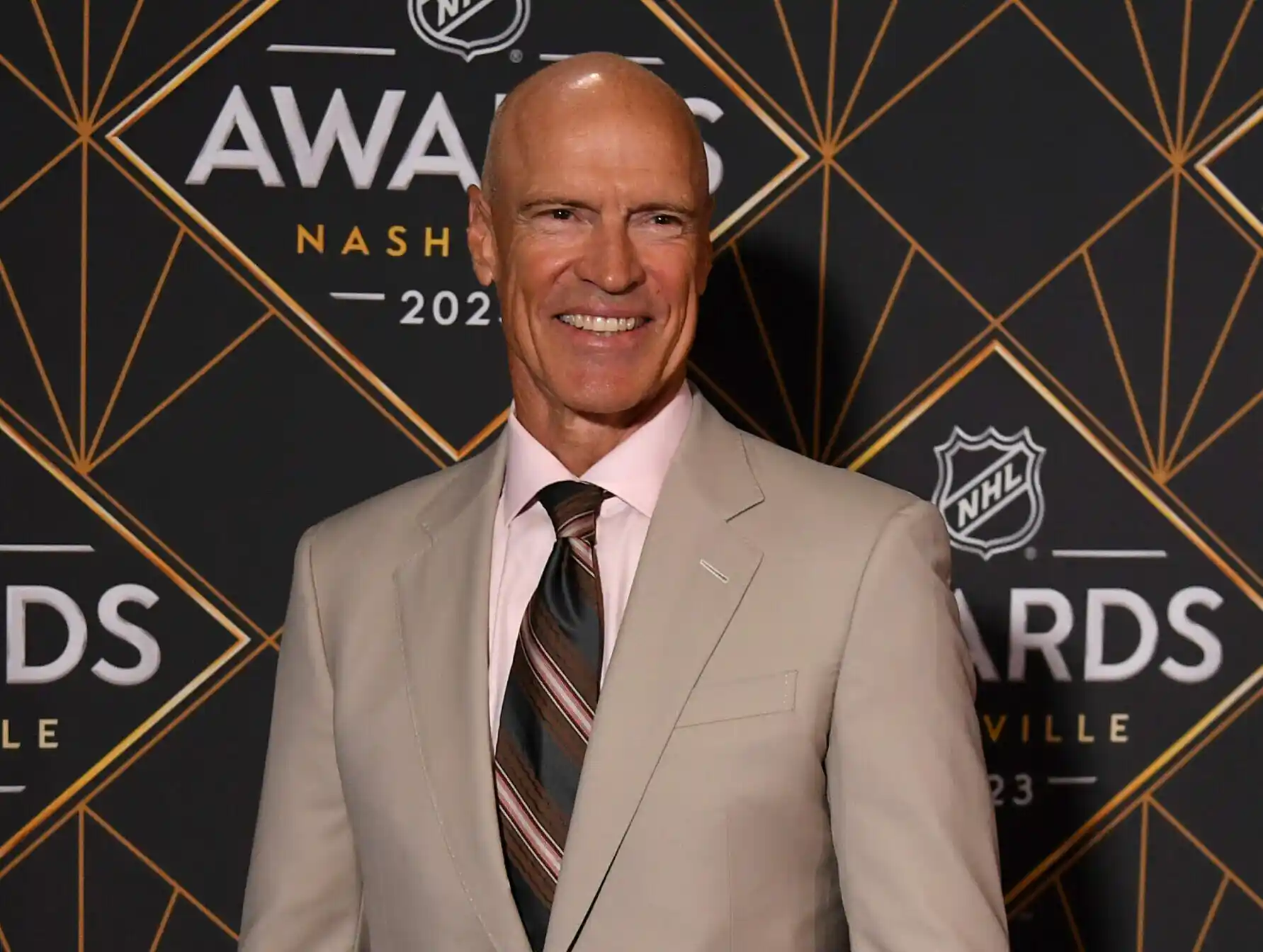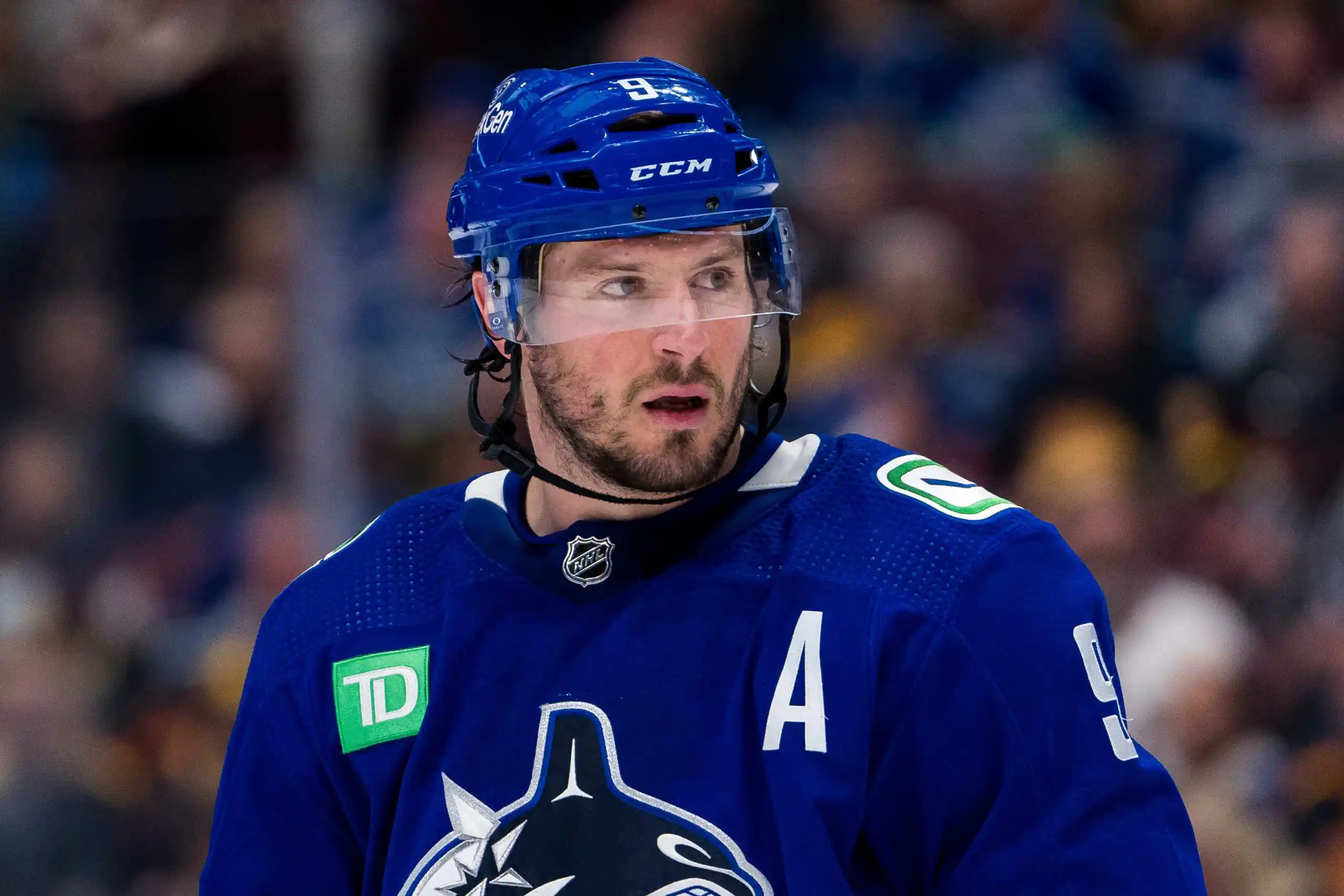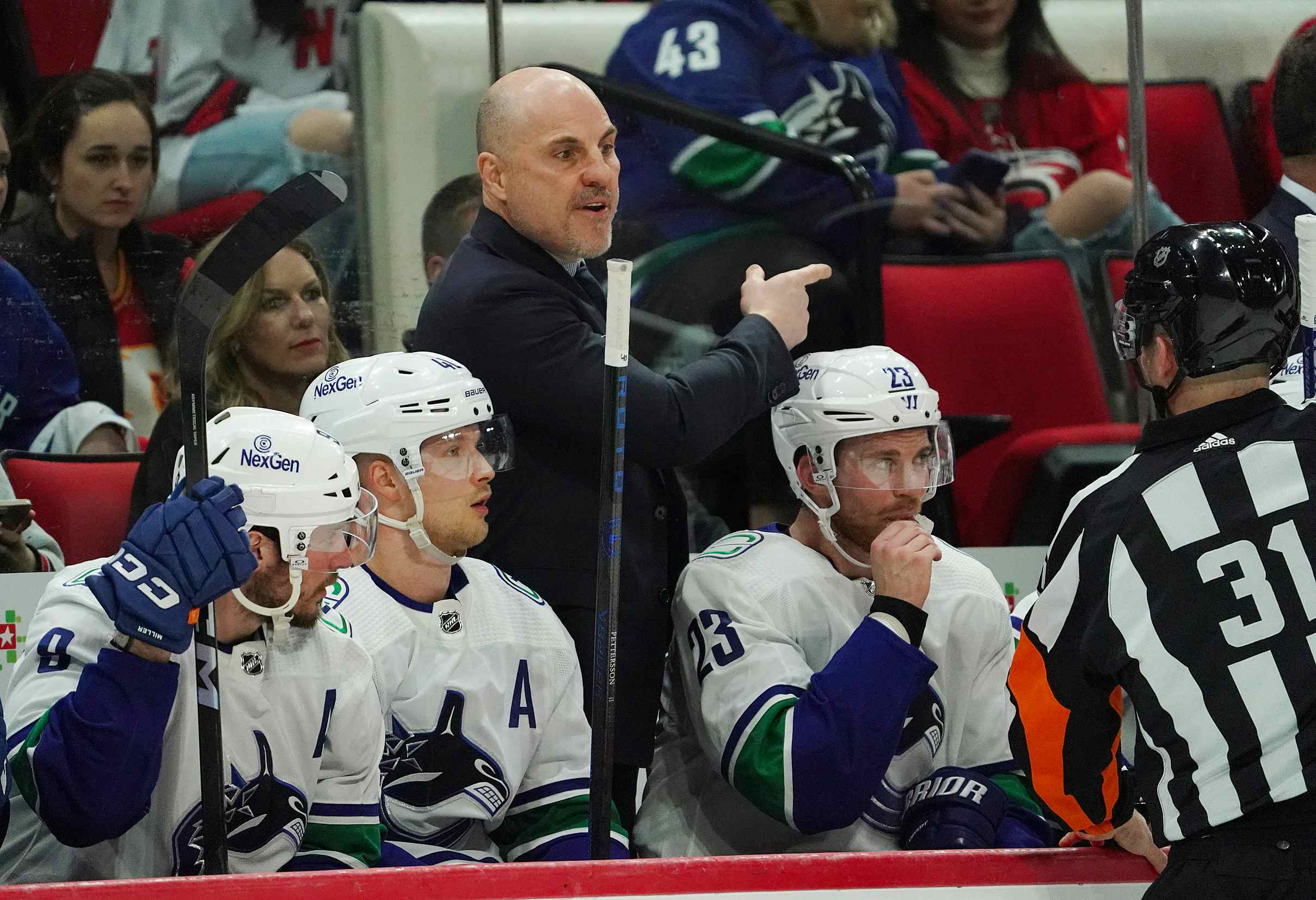Brandon Sutter’s return might not help as much as you hope it will
Brandon Sutter will be returning to the Vancouver Canucks’ lineup tonight for the first time since November 10th. While the 26-year-old centre has his detractors, the overwhelming majority of the fanbase is excited for his return. After all the Canucks were 7-4-5 with him in the lineup and have been 13-14-6 since. That’s a difference in point pace of eighteen over the span of 82 games; or, to put it another way, the difference between the upper end of the basement and making the playoffs.
At the same time, though, it’s possible that he’s not the missing piece that will make this team successful. Let me take you on a journey laced with East Coast Bias if you’ll allow me.
In a lot of ways, this year’s Canucks team reminds me of the 2013/14 Toronto Maple Leafs. Both teams were at the bottom of the league standings two years prior, appeared to be ready for a slow crawl back up, and suddenly shot up from the bottom four of their conference to the fifth seed. Both teams tragically lost to a rival, and both management groups had the same thought.
One of “hey, maybe things aren’t so bad”. One where the team didn’t necessarily have to mortgage the future for aging players, but at the same time, didn’t need to sell to fully restock the cupboards. One where all the team needed to be successful in the present was a bit more sandpaper, a bit more character, and a bit more passion. There was no need to rebuild; just a need to retool.
Both teams even set their sights on the same core asset come draft day; not a top prospect, but an NHL-ready centre to be a force to be reckoned with in the bottom six. The Canucks chose to trade Nick Bonino, Adam Clendenning, and a second round pick for Sutter and a conditional third. The Leafs traded a second and a pair of fourth rounders for Dave Bolland. Yes, the very same Dave Bolland who is a villain in Vancouver for being a general shit disturber and having choice words to describe Henrik and Daniel Sedin.
Here’s the thing about Bolland in Toronto; he only lasted a single year, but he encapsulated the era that was before the team finally got serious about their rebuild.
Bolland built up a bit of an unwarranted reputation. He had two Stanley Cup rings, one of which he scored the winning goal for just weeks prior to the trade. But he was a secondary player on a team loaded to the brim with star players, which made him look better than he was. His even strength point production was solid (playing 92% of your ES minutes with Patrick Kane in your last year helps), but he was Chicago’s worst possession player, year in and year out. He was seen as a penalty killer, but he caused more penalties than he drew, making himself unavailable to help. But he was a hard worker, muti-time champion, and a local boy, so the Leafs felt that he was the piece they needed to go the extra mile; even going as far as to buy out Mikhail Grabovski to make room for him.
Things started out great for him. Bolland picked up 11 points in his first 15 games, including two Game Winning goals. He crashed the net more than the Hawks had ever allowed him to, and the unsustainable Leafs started the season 10-4-0. Management felt extremely smart about their choice. But then, against the Canucks (go figure), Bolland went into the boards with Zack Kassian and came out with a severed Ankle Tendon.
The injury was severe and punted him out of the lineup for a little over four months. The Leafs tumbled down the standings; as a circumstance, rather than a result. Toronto’s record over the prior calendar year had been massively inflated by above-the-curve shooting and save percentage numbers, and once the sticks went cold, the team cratered. By the time Bolland returned to the lineup, the Leafs were in their rightful place near the bottom of the standings.
But over the course of his recovery, the general tone across the mainstream media and the fanbase was that the team missed their utility forward. The team wasn’t losing because they were poorly coached and ill-suited to take on the rest of the league according to them; they were losing because they were missing Bolland’s talent, charisma, two-way play, and leadership. His return was much anticipated, and pressure was put on the team to make him a building block moving forward.
But even his early-season numbers were a career-wise anomaly. In those 15 games, he was scoring just as much despite fewer opportunities, driving play, and creating scoring chances; none of which he had ever one prior, and none of which he ever did again. In his final eight games of the season, he played sheltered minutes, had below average possession numbers on one of the worst possession teams in history, scored just two points, and his team won just two games.
Even still, the Leafs tried their hardest to sign him. Bolland asked for 7 or 8 years at $5 million per; Dave Nonis was okay with the term, but wanted to bring the dollar figure ever so slightly lower. Despite being less than a million dollars apart over the full term, Bolland walked away from negotiations, eventually signing a five-year deal with Florida for an obscene $5.5 million per season.
Today, Bolland continues to struggle with lower body injuries and has played just 78 games in the past season and a half. He’s been one of Florida’s weakest contributors in every facet of the game, having clearly lost a step on his already less than exemplary performance.

What does this have to do with Brandon Sutter, you might ask? Well, they’re very comparable players. Both have reputations as fantastic shutdown forwards due to their visual efforts, whether it’s their foot speed, their relentlessness in blocking shots or throwing the body, and their willingness to be on the ice in absolutely any situation. The data leans towards neither being particularly good at their jobs.. until the start of their first post-trade season.
Like Bolland, Sutter’s numbers in his first stretch of games (15 to Sutter’s 16) are well above his previous 400+ games of hockey. His even strength production is up, his shooting percentage is up, his usually shockingly bad relative possession numbers are unusually positive, and he’s even doing significantly better at the faceoff dot. He has eight points in sixteen games; not spectacular, but his best pace in over half a decade nonetheless.
But it’s very unlikely that, after 495 regular season games, Sutter has improved enough to singlehandedly make the Canucks a winning hockey team. It’s more probable that he was a benefactor of an usually positive stretch, and that he disappeared from the lineup at just the right time for his own results. It’s created an illusion of success where the odds favour “right place at the right time”.
It should also be noted that its rare for a player to come back from a Sports Hernia surgery and be better for it. The declines of Ryan Getzlaf, Bobby Ryan, Jonathan Cheechoo, Michael Grabner, Kyle Wellwood, and many others (usually goalies) may have been coincidentally timed with their surgeries, but there is a definite loss in mobility associated with the procedure. That’s concerning, especially when Sutter’s foot speed is such a huge part of his game.
Ultimately, I wouldn’t hold my breath in regards to Sutter being able to return at the same capacity as he started the year. More likely than not, you’ll see him decline back to his typical production and possession rates, especially once Henrik Sedin returns to take back the lion’s share of centre ice time. Unfortunately for the Canucks, they jumped the gun on the whole “long term contract decision” part of the equation, but at least his salary is a fair bit lower than what Florida put into his unfortuante comparable.
Recent articles from Jeff Veillette





